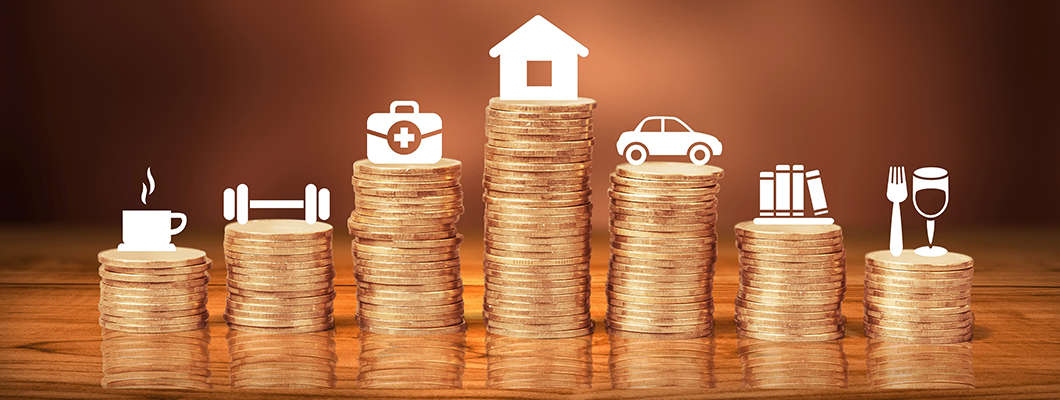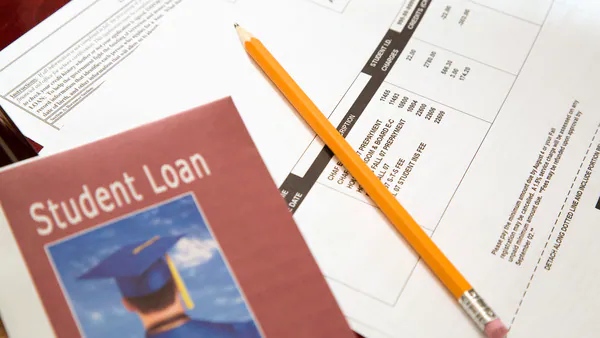Owning a home is a lifelong dream for many, and for most people, it is also the single largest investment they will ever make. Given the high costs associated with buying property, very few individuals can afford to pay the full amount upfront. This is where home loans come in. They serve as a financial bridge, helping people achieve their homeownership goals while paying off the debt over a period of time.
In this comprehensive guide, we will explore what a home loan is, how it works, the different types, the application process, factors that affect your eligibility, and much more. Whether you’re a first-time homebuyer or considering refinancing your existing mortgage, this article will give you a solid understanding of home loans.
Key Takeaways
- A home loan helps you purchase or build a home with manageable monthly payments.
- Understand the interest rate type (fixed vs floating) and its long-term implications.
- Always check your eligibility, credit score, and financial stability before applying.
- Choose the right loan type that matches your specific needs—purchase, construction, or improvement.
- Tax benefits under Sections
What Is a Home Loan?
A home loan, also known as a mortgage, is a sum of money borrowed from a bank or a financial institution to purchase, construct, renovate, or refinance a residential property. The borrower agrees to repay the loan amount along with interest through monthly installments over a specified period, commonly ranging from 10 to 30 years.
The property purchased serves as collateral, meaning that if the borrower defaults on repayments, the lender has the legal right to seize the property through a process called foreclosure.
How Does a Home Loan Work?
| Factor | Description | Why It Matters |
|---|---|---|
| Loan Amount | The total amount of money borrowed from the lender to purchase a home. | Determines how much you can afford to borrow and influences your monthly payments. |
| Interest Rate | The percentage of the loan that the lender charges for borrowing the money, typically expressed annually. | Affects how much you will pay over the life of the loan. Lower interest rates mean less cost. |
| Down Payment | The upfront payment made by the borrower, usually a percentage of the home’s purchase price. | A higher down payment reduces the loan amount and monthly payments, and can help secure better terms. |
| Loan Term | The length of time to repay the loan, typically 15, 20, or 30 years. | Affects monthly payments and total interest paid. A longer term lowers payments but increases interest. |
| Monthly Payments | Regular payments made to the lender, consisting of both principal (loan amount) and interest. | The size of your monthly payment depends on the loan amount, interest rate, and term. |
| Principal | The original amount of money borrowed from the lender, which reduces over time as payments are made. | As you pay off the principal, you own more of the property, and it affects how much equity you build. |
The process of obtaining and repaying a home loan typically involves the following steps:
Loan Application
The borrower submits a loan application with necessary documents such as income proof, credit report, identification, and property details.
Loan Approval
The lender assesses the borrower’s eligibility based on credit score, income, debt-to-income ratio, and employment status. Upon satisfaction, a loan sanction letter is issued.
Disbursal of Funds
Once the legal and technical verifications are complete, the lender disburses the loan amount, either in full or in stages, directly to the property seller or builder.
Repayment
Repayment begins through EMIs (Equated Monthly Installments), which consist of both principal and interest. The repayment period can range from 10 to 30 years, depending on the borrower’s choice and eligibility.
Loan Closure
The loan is considered closed when the borrower repays the full loan amount with interest. The bank then releases the loan clearance certificate and relinquishes the lien on the property.
Types of Home Loans

There are different types of home loans designed to suit specific needs:
Home Purchase Loan
Used for buying a new or resale residential property.
Home Construction Loan
For building a house on a plot you own.
Home Improvement Loan
To fund renovations, repairs, or home enhancements.
Home Extension Loan
For adding new rooms or expanding existing space in a home.
Land Purchase Loan
To buy a plot of land for constructing a home in the future.
Home Loan Balance Transfer
Allows borrowers to transfer their existing home loan to another lender for better interest rates or service.
NRI Home Loans
Specifically designed for Non-Resident Indians (NRIs) who want to buy or invest in property in their home country.
Components of a Home Loan

Understanding the core components of a home loan helps you make better decisions.
Principal Amount
The original loan amount borrowed.
Interest Rate
The cost of borrowing money, expressed as a percentage. It can be fixed, floating, or hybrid.
EMI (Equated Monthly Installment)
The monthly repayment amount, combining both principal and interest.
Tenure
The total period over which the loan is to be repaid.
Down Payment
A lump-sum amount (usually 10-20% of property value) paid by the buyer upfront.
Loan-to-Value (LTV) Ratio
The ratio of the loan amount sanctioned to the total value of the property.
Interest Rates: Fixed vs Floating
Choosing between fixed and floating interest rates can significantly affect your EMI and total cost of borrowing.
Fixed Interest Rate
- Remains constant throughout the loan tenure.
- Offers stability and predictability.
- Generally 1-2% higher than floating rates.
Floating Interest Rate
- Fluctuates with market conditions or benchmark rates.
- Can lead to savings if rates fall.
- May increase EMI or tenure if rates rise.
Some lenders also offer hybrid loans, which start with a fixed rate for a certain period and then switch to a floating rate.
Factors Affecting Home Loan Eligibility

Lenders evaluate several factors before approving a home loan:
- Credit Score: A score of 750 or above improves your chances.
- Income: Higher income ensures better repayment capacity.
- Age: Younger applicants can avail of longer tenures.
- Employment Status: Stable job or business boosts credibility.
- Existing Liabilities: Other loans or EMIs may affect your loan amount.
Home Loan Application Process
Here’s a step-by-step guide to the home loan application process:
Research and Comparison
Compare loan offers from various banks and NBFCs based on interest rates, processing fees, and customer service.
Eligibility Check
Use online calculators to estimate your loan eligibility and EMI.
Document Submission
Submit necessary documents: identity proof, income proof, address proof, property papers.
Loan Approval
The lender reviews your application, credit history, and financials. If all checks out, a sanction letter is issued.
Property Verification
The bank conducts a legal and technical check of the property.
Loan Agreement and Disbursement
Once verified, you sign the loan agreement and the bank disburses the amount.
Tax Benefits on Home Loans
Home loans offer significant tax advantages under the Indian Income Tax Act:
- Section 80C: Deduction of up to ₹1.5 lakh annually on principal repayment.
- Section 24(b): Deduction of up to ₹2 lakh annually on interest paid for a self-occupied property.
- Section 80EE/80EEA: Additional deduction for first-time homebuyers, subject to conditions.
Benefits of a Home Loan
- Home Ownership: Makes property ownership accessible.
- Tax Deductions: Reduces your overall tax liability.
- Capital Appreciation: Real estate is a valuable long-term investment.
- Improved Credit Score: Regular repayments improve creditworthiness.
- Liquidity: Frees up your savings for other investments or emergencies.
Risks and Challenge
Despite the benefits, home loans come with certain risks:
- Interest Rate Fluctuations: May increase EMI burden.
- Property Valuation Issues: Overpriced properties may not get full loan amounts.
- Default Risk: Missing EMIs can result in penalties or foreclosure.
- Hidden Charges: Processing fees, legal fees, and other costs may add up.
Also Read: What Is a Personal Loan And How Does It Work?
Conclusion
A home loan is an essential financial tool that enables individuals to fulfill the dream of homeownership. Understanding how it works—from types and eligibility to interest rates and tax benefits—can help you make smart decisions. As with any long-term financial commitment, it’s crucial to plan thoroughly, compare lenders, and read the fine print before signing the dotted line.
FAQs
1. What is the minimum credit score required for a home loan?
Most lenders prefer a score of 750 or above. Lower scores may still qualify but with higher interest rates or lower amounts.
2. Can I get a home loan without a co-applicant?
Yes, but having a co-applicant (spouse or family member) can improve your loan eligibility and approval chances.
3. What happens if I miss an EMI payment?
Missing EMIs may result in late fees, damage to your credit score, and in extreme cases, legal action or foreclosure.
4. Is it better to take a shorter or longer loan tenure?
A shorter tenure means higher EMIs but lower overall interest. A longer tenure lowers EMI but increases total repayment cost.
5. Can I prepay my home loan?
Yes, most lenders allow part or full prepayment. However, some fixed-rate loans may have prepayment penalties.
6. How is the EMI calculated?
EMIs are calculated based on principal, interest rate, and loan tenure, using a standard EMI formula or online calculators.
7. Can I switch from a fixed to a floating rate?
Yes, you can switch by paying a conversion fee, depending on the lender’s terms.




